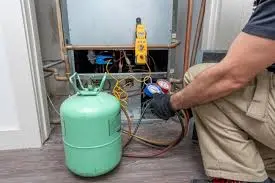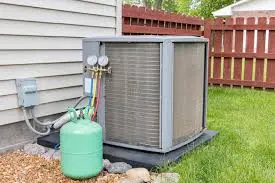The HVAC industry has undergone significant changes in recent years, particularly concerning refrigerants. One of the most discussed topics is the phase-out of R22 refrigerant, which has been widely used in air conditioning and refrigeration systems. This blog post will explore the replacement options for R22 refrigerant, their associated costs, and provide essential information to help homeowners and businesses navigate this transition.
Understanding R22 Refrigerant

What is R22 Refrigerant?
R22 refrigerant, also known as chlorodifluoromethane or HCFC-22, has been a popular choice for residential and commercial air conditioning systems for decades. It is known for its efficiency and effectiveness in cooling and heating applications. However, R22 is a hydrochlorofluorocarbon (HCFC), which means it contributes to ozone depletion and has significant environmental impacts.
Is R22 Refrigerant Still Available?
As of January 1, 2020, the production and import of R22 refrigerant were banned in the United States under the Clean Air Act. This phase-out is part of a global effort to reduce ozone-depleting substances. While recycled and reclaimed R22 can still be used, it is becoming increasingly scarce and expensive. The dwindling supply means that those who still rely on R22 systems will face rising costs and limited availability.
Replacement Options for R22 Refrigerant
What Replaced R22 Refrigerant?
The HVAC industry has developed several alternatives to R22 refrigerant, each with its own set of benefits and considerations. The most common replacements include R410A, R407C, and R422D. These alternatives are more environmentally friendly and comply with current regulations.
R410A
R410A, also known as Puron, is one of the most popular replacements for R22 refrigerant. It operates at a higher pressure than R22, which means that systems designed for R22 cannot simply be retrofitted with R410A. Instead, a complete system replacement is often necessary. R410A is chlorine-free, which makes it more environmentally friendly.
R407C
R407C is another viable alternative to R22. It is a blend of three different refrigerants and is compatible with the existing R22 equipment after some modifications. R407C has similar properties to R22, making the transition somewhat smoother than switching to R410A.
R422D
R422D is designed as a direct drop-in replacement for R22 in existing systems. This refrigerant can be used without major modifications to the existing equipment, making it a convenient option for those looking to extend the life of their current systems. However, it may not be as efficient as some other alternatives.
Costs of R22 Refrigerant Replacement
The cost of replacing R22 refrigerant varies depending on the chosen alternative and the specific needs of your system. Here is a general breakdown of the potential costs involved:
System Retrofit vs. Replacement
- Retrofit Costs: Retrofitting an existing system to use a replacement refrigerant like R407C or R422D typically involves modifying or replacing certain components, such as expansion valves, seals, and filters. The cost for a retrofit can range from $500 to $2,000, depending on the complexity of the system.
- Replacement Costs: Replacing an entire HVAC system to use R410A or another modern refrigerant is a more expensive undertaking. A complete system replacement can cost between $3,000 and $7,000 or more, depending on the size and type of the system.
Refrigerant Costs
- The cost of the refrigerant itself is another consideration. R410A is widely available and relatively affordable, while R407C and R422D may be slightly more expensive. Prices for these refrigerants can range from $50 to $150 per pound.
Long-Term Savings
- Although the initial cost of replacing an R22 system can be high, it is important to consider the long-term savings. Modern refrigerants and systems are more energy-efficient, which can lead to lower utility bills. Additionally, newer systems typically require less maintenance and have a longer lifespan, further offsetting the upfront costs.
Additional Considerations

Can You Still Buy R22 Refrigerant?
While it is still possible to purchase reclaimed or recycled R22 refrigerant, the cost is prohibitive, and availability is limited. Those who continue to use R22 systems will face increasing difficulties as the supply diminishes. It is generally more cost-effective and environmentally responsible to transition to a modern refrigerant.
The Role of Professional HVAC Technicians
Navigating the transition from R22 refrigerant to a suitable alternative requires the expertise of a professional HVAC technician. They can assess your current system, recommend the best replacement option, and carry out the necessary modifications or replacements safely and efficiently.
Also Visit: Why Every Home Needs a Whole House Humidifier
Conclusion
The phase-out of R22 refrigerant marks a significant shift in the HVAC industry. Understanding your options for replacing R22 is crucial for maintaining efficient and reliable cooling and heating systems. Whether you choose to retrofit your existing system or invest in a new one, considering factors such as cost, environmental impact, and long-term savings is essential. For detailed guidance and professional support, consult with a qualified HVAC technician to ensure a smooth transition to a more sustainable refrigerant solution.
